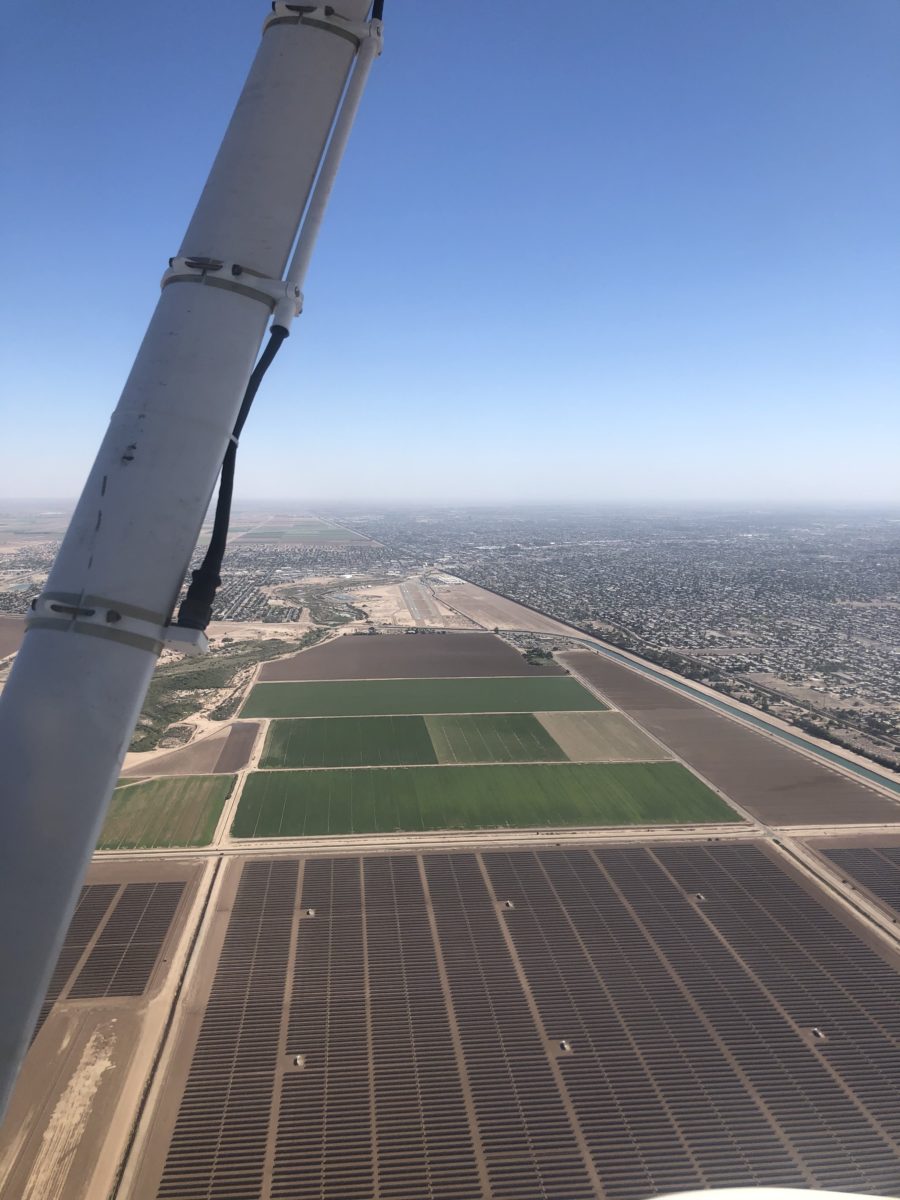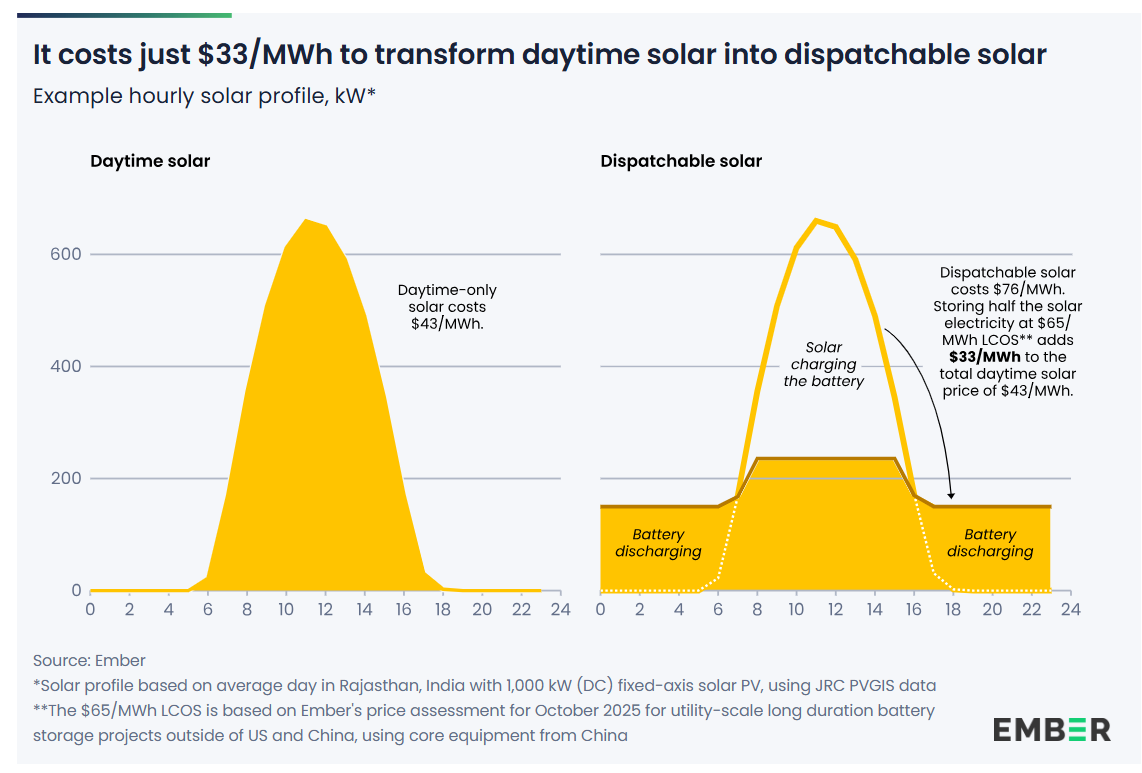Solar asset managers such as SMA, the German company known for its smart solar technology, are finding that aerial inspections using drones and manned aircraft are the optimal way of managing and maintaining large solar installations.
SMA has O&M contracts for over 1,000 sites, from small commercial of 30 kW and up to large-scale installations of over 600 MW. The company has been managing assets since 2015 and since then much has changed in terms of the technology and techniques used.

Today they are using drones and manned aircraft to conduct thermal and visual inspections of modules, looking for defects or modules or strings or groups that may be offline. In the course of inspection, they may see, for example, strings, modules and sections offline because an inverters not running, but the majority of the time the imaging is finding broken modules or hot spots on modules.
pv magazine spoke with Mark Culpepper, general manager solar solutions with DroneBase, a global company that specializes in data captured through aerial imaging. DroneBase serves a range of industries including wind energy, insurance, construction, real estate, and more—but the solar industry has increasing become a focus as solar assets increase across the globe.
Aerial inspections have great benefits in the solar industry not the least of which is speed. An unmanned drone can inspect about 20 MW per day per drone operator for on-demand thermal inspections or spot checks, while manned aircraft can capture over 500 MW in a 4-hour period. SMA uses both unmanned drones and airplanes to complete its inspections, finding aerial imaging far superior to “the old way” of doing things, which was manual inspection.
What’s the difference between the two? “It comes down to picking the right tool for the job,” says Culpepper. “Drones are the best tool for spot checks of solar energy systems. We use manned aircraft for two reasons: for annual health scans of systems and to capture images of large projects and portfolios.”
DroneBase recently announced its North American Solar Scan program, which flies each spring and fall and cover every major solar market in both Canada, including Ontario, and the United States, including California, Nevada, Colorado, Texas, Florida, North Carolina, South Carolina, Illinois, Massachusetts, and more.
Manual inspection required an inspector to go into the field and, using an I-V curve tracer, the inspector would go inside each combiner box, check every string while it’s operating, check every string after they pull the fuse out and see where it’s sitting, etc. Jamie Mordarski, Director, O&M Americas at SMA America, told pv magazine USA that the problem with manual inspection is time.
“It takes anywhere between 15 to 25 minutes per combiner box and if you have a site that has a combiner box with say 1200 combiners boxes, that’s 400 man hours.” He added that in addition to the time it takes, manual inspection doesn’t tell you what the problem is or what module it is. The inspector would have to isolate the string to figure out which module it is. With a thermal aerial scan, a 600 MW site can be done in 5 hours.
Mordarski said that seven years ago when SMA started using aerial imaging it was not something that every solar asset owner was doing. When he saw what aerial imaging companies like DroneBase could do and how beneficial it was, he knew it was better than going out into the field with a meter. “As people are starting to see more aerial inspection, they realize it’s better, cheaper, quicker, easier,” said Mordarski. “Doing it the old way just doesn’t make sense.”
To conduct its inspection, SMA uses a combination of drones and manned aircraft. Many of the inspections they can do with their own pilots and drones/airplanes, and for very large or highly concentrated portfolios they hire DroneBase. Even when SMA does its own inspections, it supplies SMA’s raw data to DroneBase to complete the analysis.
Technological advancements
Dramatic changes have occured in the technology in the seven years that SMA has been conducting aerial thermal imaging inspections. Mordarski said that there were not off-the-shelf drones back then, and the inspection companies that SMA was working were getting custom built drones from Europe and adding off-the-shelf thermal images that weren’t really made for drones. Some were even using GoPro cameras that they’d strap to the drone. Now drones are made with high-resolution thermal imagers on them natively so you don’t need two separate cameras. They are also capable of doing automated patterns, where you draw a box on a map, set your parameters and off you go. “It does it by itself,” said Mordarski.
Inspections of solar assets by manned aircraft is also becoming more common. It used to be that the drones got better resolution because they fly closer to the solar installations than planes, which have to fly higher. Mordarski pointed out that today you can get the same resolution from the plane as from the drone as long as you’re flying at the right altitude. “The technology has improved, speed has improved, quality has improved, and the cost per engagement has gone down.”
From niche to mainstream
In just a few years, aerial inspection of solar assets has gone from a niche application to mainstream use. Technology has advanced dramatically in the intervening years, and cameras and imaging continues to advance, along with new ways of analyzing the data. For example, DroneBase recently acquired India-based AirProbe, a specialist in drones using artificial intelligence in its analytics. As a result of these new capabilities, DroneBase is expanding its offering to include construction progress monitoring, serial ID mapping, and advanced shade analysis. Overall, aerial inspection has gotten to the point where “everyone has to do it,” said Mordarski. The bottom line, according to Mordarski is that using aerial thermography and high-resolution visual inspection is somewhere between 10x lower cost and 30x as fast as doing it by manually. For SMA, there’s no going back.
This content is protected by copyright and may not be reused. If you want to cooperate with us and would like to reuse some of our content, please contact: editors@pv-magazine.com.









By submitting this form you agree to pv magazine using your data for the purposes of publishing your comment.
Your personal data will only be disclosed or otherwise transmitted to third parties for the purposes of spam filtering or if this is necessary for technical maintenance of the website. Any other transfer to third parties will not take place unless this is justified on the basis of applicable data protection regulations or if pv magazine is legally obliged to do so.
You may revoke this consent at any time with effect for the future, in which case your personal data will be deleted immediately. Otherwise, your data will be deleted if pv magazine has processed your request or the purpose of data storage is fulfilled.
Further information on data privacy can be found in our Data Protection Policy.